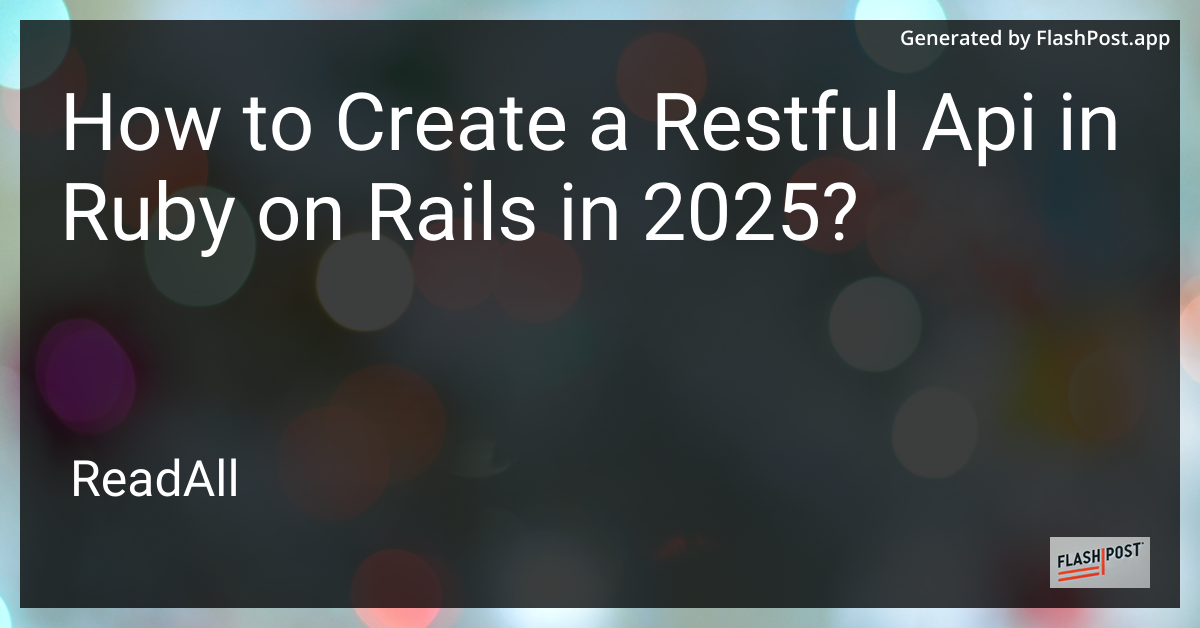
In 2025, creating a RESTful API with Ruby on Rails remains a powerful choice due to its simplicity and productivity. Rails, known for its convention over configuration philosophy, provides developers with the tools to quickly build robust APIs. This guide will walk you through the process of creating a RESTful API using the latest practices and features of the Ruby on Rails framework.
Prerequisites
Before we dive into creating an API, ensure you've set up a development environment. For complete guidance on setting up Ruby on Rails, refer to this simple ruby on rails setup. Additionally, ensure you have a database like MySQL installed, which can be done via this comprehensive guide: installing MySQL for Ruby on Rails.
Step 1: Setting Up a New Rails API
To get started, initialize a new Rails API-only application. Use the following command:
rails new my_api --api
The --api flag configures your Rails application to include only the aspects required by an API, ensuring a lightweight footprint.
Step 2: Configure the Database
With your application created, navigate to config/database.yml and configure your database settings. Ensure you modify this file to match your MySQL credentials.
Once configured, run the following commands to create and migrate the database:
rails db:create rails db:migrate
Step 3: Generating a Resource
Assume you want to create an API for managing articles. You can generate a scaffold for the articles resource with:
rails generate scaffold Article title:string body:text
This command sets up the model, controllers, and routes necessary for the API.
Step 4: Configuring Routes
Open config/routes.rb and ensure your routes are configured as follows:
Rails.application.routes.draw do resources :articles end
This enables the CRUD actions needed for a RESTful API.
Step 5: Testing Your API
Start your Rails server with:
rails s
Visit http://localhost:3000/articles or use a tool like Postman to test the endpoints. You should be able to perform CRUD operations on your Article resource.
Conclusion
By following these steps, you've successfully created a RESTful API in Ruby on Rails. Thanks to the Rails framework's conventions and features, you can continue to build more complex APIs efficiently. Keep your skills sharp and explore other advanced Rails features to enhance your API development in 2025.
For further exploration, delve deeper into Rails documentation and grasp the nuances between different frameworks using this resource: Ruby on Rails framework.